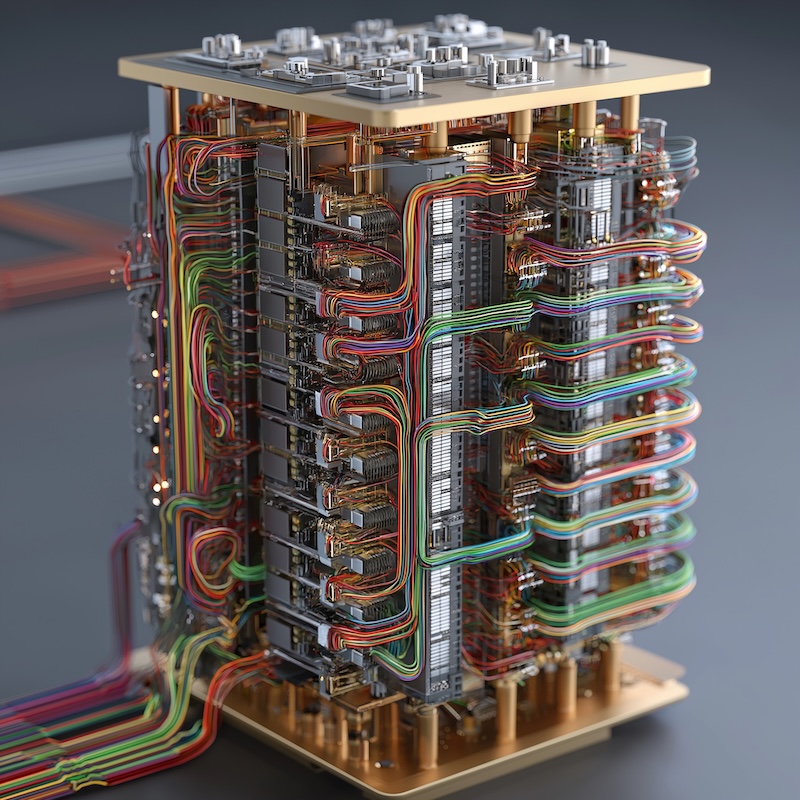Introduction
Some weeks in AI are loud and dramatic, while others offer a more subtle experience—a gentle reminder to notice interesting developments.
This week was one of those softer moments, with seven noteworthy events that prompted me to reflect: We are truly building something new.
Highlights include the Vatican’s thoughts on human dignity, the fact that only 9% of developers trust AI-generated code, MIT’s new software model for large language models, NVIDIA’s petaflop-capable workstation, VUNO’s profitable medical AI, Meta’s automatic speech recognition for over 1,600 languages, and a new AI-assisted chip design tool. This week showcases the connections between ethics, coding, hardware, and humanity.
1. Ethics of AI in Medicine Spotlighted at the Vatican
A gathering in Rome — doctors, scientists, ethicists, all walking under the same warm light — met to discuss AI and human dignity.
I love that phrase. Dignity. It’s not often used in tech, but maybe it should be.
Somewhere between code reviews and deployment pipelines, the idea of dignity might be the reminder we didn’t know we needed.
A small reflection
Sometimes I think about how the world turns in slow circles.
There were centuries when the Church stood firmly against novelties — suspicious of books, printing presses, and anything that let knowledge travel too freely. New ideas felt unruly back then, almost dangerous.
And now, here we are: the Vatican hosting a conference on AI ethics, talking about dignity, fairness, and the human heart behind technology.
It feels a little like watching an old door open again — carefully, thoughtfully — after a very long time.
History has a lovely sense of humour: the institution that once feared books is now debating neural networks.
Moments like this make me hopeful.
Even the slowest institutions can learn. Even the most cautious voices can join the conversation. And maybe that’s the comforting part — we’re not navigating this alone. We’re learning together, at different speeds, but still moving in the same direction.
In the post Could AI Become a New Religion? I have shared some ideas about AI and the humanity.
2. Developers Say: “AI Code? Yes… but let me check it first.”
A new survey showed that only 9% of developers trust AI-generated code without reviewing it. Honestly, that number made me smile. Not as a criticism — more like recognition.
We’re curious, willing, open — but we still want to feel the shape of the code with our own hands.
Even the friendliest model can leave a mysterious line of code. And then it stares at you. And you stare back :)
3. MIT’s New Way of Thinking About Modular Software
MIT CSAIL introduced a model of building software around concepts and synchronizations — almost like giving the code a grammar that both humans and LLMs can understand.
When code feels like a foreign language, maybe it simply needs a better dictionary.
4. NVIDIA DGX Spark — A Petaflop, but Make It Cosy
The DGX Spark is finally here — a workstation with one petaflop of compute that can sit on your desk. A few years ago, this would’ve sounded like sci-fi.
This shift from cloud-scale to you-and-your-desk-scale feels like a quiet revolution.
Warning: possession of a petaflop may cause unreasonable confidence in spontaneous weekend model training.
Read more at Efficientlyconnected.com
5. VUNO Reports Its First Profitable Quarter
VUNO Inc., a medical-AI company from Korea, turned a profit this quarter.
This might not sound glamorous, but it’s a milestone — a signal that clinical AI is no longer only research papers and hopeful prototypes.
It’s becoming part of the real world.
6. Meta Releases Omnilingual ASR (1,600+ Languages!)
Meta stepped back into open-source with a multilingual ASR model covering 1,600+ languages.
It’s more languages than most of us will encounter in a lifetime — but models will. This feels like a step toward a world where language is less of a barrier, and more of a bridge.
Your app can now listen to almost everyone. The only remaining challenge is listening to yourself during debugging.
7. AiEDA — AI Meets Chip Design
A new open-source library, AiEDA, brings AI tools into chip design — one of the slowest, most detail-heavy engineering domains we have.
And yet, here it is: a small sign that AI is starting to help build the very hardware it runs on.
There’s something wonderfully circular about that.
Imagine debugging a chip with an AI that quietly whispers, “I think your transistor is tired.”
A Little Closing Thought
This week felt gentle, thoughtful — less about huge shocks and more about threads weaving together. Ethics. Trust. Structure. Speech. Chips. Hardware. Healthcare.
Everything touching everything else.
And somewhere in between, developers like us are trying to make sense of it all — one small experiment, one curious evening, one tiny project window at a time.
If any of these stories sparked a thought, or a little idea you want to explore, let me know.
I always enjoy learning new things alongside you.

